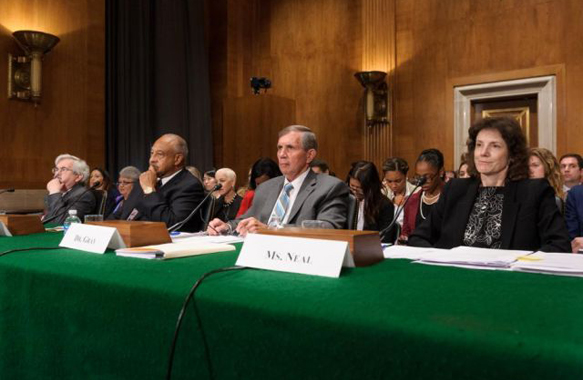Intellectually people may know that Charter Schools are not public, although many are identified as such. After all, as the National Alliance for Charter Schools ascribes “Charter schools are independent public schools”, ostensibly being one while essentially being the other. Perhaps, a Charter can best be described as a “character actor.” These learning centers are performers. They pretend to perform, but do so through a process we might call “method acting.” Charters have a method that creates the illusion of achievement. What makes Charter Schools public? Caring. The Charters recite the line with feeling, we Charters are “tuition-free and open to every student who wishes to enroll,” selectively. Equalitarian. “non-sectarian, and do not discriminate on any basis.” Behind the mask of pancake powder the truth can be seen; Despite Constitution, Some Charter Schools Promote Religion. But truth need not be told. Audiences and Americans are willing to suspend disbelief.
Performance is all that counts. Presumably student performance matters most, just not as much as the cash necessary to fund the schools and feed the investors. As they say, the show must go on. But oh the expense. The cost of a ticket is steep. It seems for the privilege of Charter Schools we must sacrifice true public education. Are we willing to pay the price? Moody’s Investor Services offers this insight…
Announcement: Charter Schools Greatest Credit Challenge To School Districts | Global Credit Research
Originally Published at Investor Services. October 15, 2013
New York, October 15, 2013 — The dramatic rise in charter school enrollments over the past decade is likely to create negative credit pressure on school districts in economically weak urban areas, says Moody’s Investors Service in a new report. Charter schools tend to proliferate in areas where school districts already show a degree of underlying economic and demographic stress, says Moody’s in the report “Charter Schools Pose Growing Risks for Urban Public Schools.”
“While the vast majority of traditional public districts are managing through the rise of charter schools without a negative credit impact, a small but growing number face financial stress due to the movement of students to charters,” says Michael D’Arcy, one of two authors of the report.
Charter schools can pull students and revenues away from districts faster than the districts can reduce their costs, says Moody’s. As some of these districts trim costs to balance out declining revenues, cuts in programs and services will further drive students to seek alternative institutions including charter schools.
Many older, urban areas that have experienced population and tax base losses, creating stress for their local school districts, have also been areas where charter schools have proliferated, says Moody’s. Among the cities where over a fifth of the students are enrolled in charter schools are Cleveland, Detroit, Kansas City, St. Louis, and Washington, D.C. Nationwide about one in 20 students is in a charter school.
One of the four risk factors Moody’s identifies as making a school district vulnerable to charter school growth is that the school district is already financially pressured and grappling with weak demographics.
A second factor is having a limited ability to adjust operations in response to a loss of enrolment to charter schools.
“Shifts in student enrollment from district schools to charters, while resulting in a transfer of a portion of district revenues to charter schools, do not typically result in a full shift of operating costs away from district public schools,” says Moody’s Tiphany Lee-Allen, the Moody’s Associate Analyst who co-authored the report. “Districts may face institutional barriers to cutting staff levels, capital footprints and benefit costs over the short term given the intricacies of collective bargaining contracts – leaving them with underutilized buildings and ongoing growth in personnel costs.”
A third risk factor for a school district is being in a state with a statutory framework promoting a high degree of educational choice and has a relatively liberal approval process for new charters and few limits on their growth, as well as generous funding.
For example in Michigan, the statutory framework emphasizes educational choice, and there are multiple charter authorizers to help promote charter school growth. In Michigan, Detroit Public Schools (B2 negative), Clintondale Community Schools (Ba3 negative), Mount Clemens Community School District (Ba3 negative) and Ypsilanti School District (Ba3) have all experienced significant fiscal strain related to charter enrollment growth, which has also been a contributing factor to their speculative grade status.
A final risk factor is when a school district is not integrated into a healthier local government, as such integration can lead to greater diversity in revenues and more flexibility in balance sheets, positioning the district to better handle operating and financial changes.
For more information, Moody’s research subscribers can access this report at Charter Schools Pose Growing Risks for Urban Public School Districts












Makes total sense. Here in Florida, you take 200,000 students out of the public school system at $7000 per student and you have a $1.4 billion gap. Assuming it costs $2000 in cash to educate a child and you have a $1 billion problem. So not only do reading, art and music programs get cut, now the Credit Rating is hurt too.
Now add the fact that the state has a plan to double the number of charter school students and you go from a real problem to a huge problem. Charter schools could be a great incubator for new ideas, but they really hurt public schools when the numbers get big.